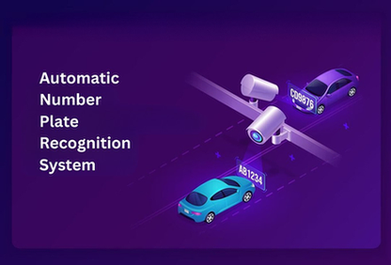
In today’s world, where almost every industry is being revolutionized by technology, the security field is also undergoing tremendous changes. Among these revolutionary solutions include the Automatic License Plate Recognition System (ALPRS). One such technology, referred to as ALPR/ANPR, is the most recent of these, but it promises major changes in policing and security generally. This article seeks to examine such issues as ALPRS characteristics, its functional features, its significance, and how it may influence future security.
Understanding Automatic License Plate Recognition Systems
Automatic license plate recognition is the name for advanced technical systems that employ optical character recognition in order to read information on car licenses. The use of cameras with infrared light to take photographs of license plates is referred to as the automatic license plate recognition system (ALPRS). Such data collection entails collecting relevant data that is analyzed by sophisticated algorithms for the identification of license plate information for real-time recognition.
Suggest to read :- Safe City Image/Video-Based Analytics: A Force Multiplier
Functionalities of ALPRS
Here are the key functionalities of ALPRS:
- License Plate Detection: The technology used in ALPRS is of the most advanced and latest, with high-resolution cameras separating the plate images into discrete license plates. Advanced image processing methods are used to detect a license plate within an image set of frames.
- Optical Character Recognition (OCR): In order to convert captured characters of a captured image to machine-readable format, OCR technology is used. The captured images must, therefore, be converted into computer-ready languages that are also humanly readable and interpretable for use in such systems.
- Database Integration: An automatic license plate system is interconnected with vehicle driver databases in many countries. With this feature enabled, license plate data can be used live through incorporating the same with other valuable information that makes it usable in matters of law enforcement and security.
Applications of ALPRS
Using this, many applications have emerged in industries that have harnessed technological prowess to improve effectiveness and safety in every aspect. Here are some key applications of Automatic License Plate Recognition System:
- Law Enforcement: It does so because it makes the law enforcers’ work easier. It makes it easier to identify criminal vehicles, thereby promoting the recovery of stolen cars, identification of criminals involved, and cases being investigated. The use of ALPRS for real-time data improves police operations.
- Traffic Management: On its part, the Automatic License plate recognition system monitors the flow of vehicles to ease traffic control. It enables one to pick off signals of wrongdoings, such as undertaking blind spots and breezing by stop signals and red light zones.
- Parking Management: One way through which ALPRS addresses the parking problem in the city is efficient parking management. It entails the setting up of an electronic system that automatically tracks parking slots in order to identify occupied and illegally parked vehicles in the lots.
- Border Control and Homeland Security: Its great utility is seen as a vital component for border control and homeland security purposes. It can also be utilized in crossing-border surveillance control, identification of dubious actions, and improvements in security in strategic infrastructure.
The Future Implications
Implications are huge; ALPRS has the potential to lead to revolutionary changes and reshape the technical and security landscape completely. As we look ahead, several key considerations and potential developments emerge:
- Enhanced Security Measures: As other technologies improved, so would the capabilities of Automatic License Plate Recognition System with the passing of time. Currently, there are already sophisticated detection units available in the market that offer a higher degree of reliability, including larger databases and good integration capacity with other security equipment. Such systems are likely to become even more efficient in the future.
- Smart Cities Integration: This shall be an input towards constructing intelligent cities. It could be incorporated into other smart products that would make urban surveillance sophisticated, optimal traffic management, and efficient security measures.
- Privacy Concerns: The benefits of an Automatic License Plate Recognition System are countless. However, a general adoption of this system is accompanied by issues surrounding privacy. The other important challenge that should be considered during the deployment of ALPRS is achieving an appropriate balance between safeguarding public security and observing people’s privacy rights.
Conclusion
The ALPRS, being a new security service, is a highly advanced technological innovation. It is powerful and versatile, with numerous applications covering everything from crime control and traffic management to various other safety issues. Going forward, the continuous development of ALPRS technical capabilities whilst demonstrating respect for privacy concerns will greatly pave the way towards enabling the full application of the technology in advancing safety in America. This marks an important shift into the intelligence cities and growing security apparatus whose central focus is modern technology solutions for establishing a safe living environment.